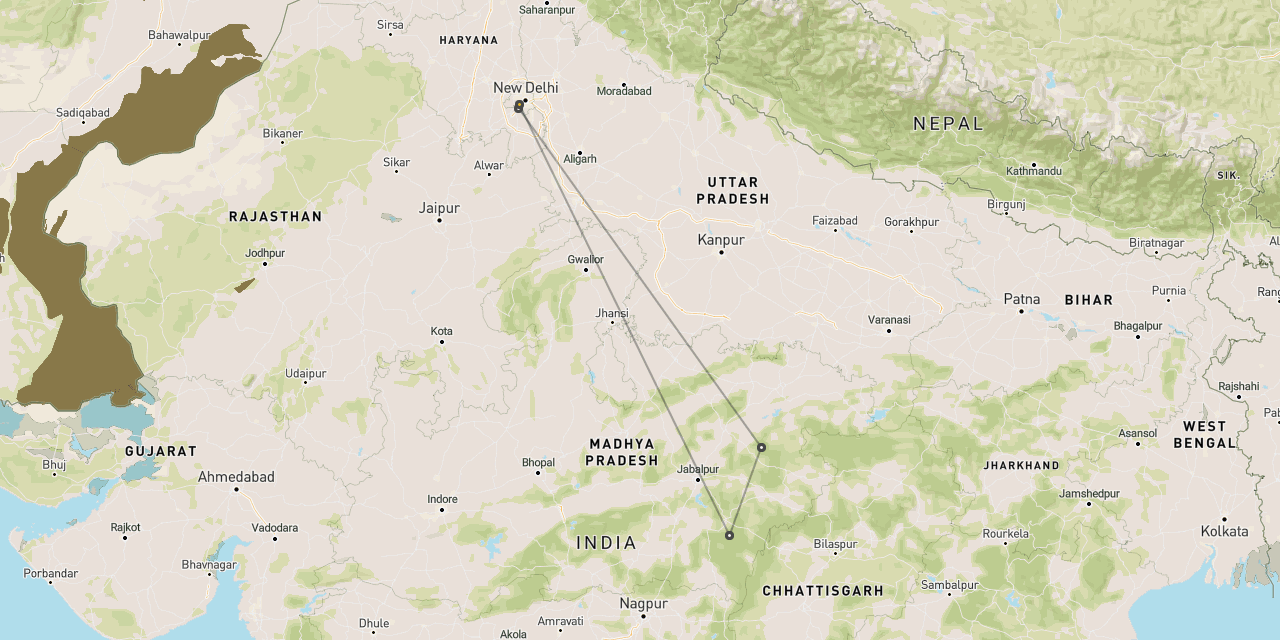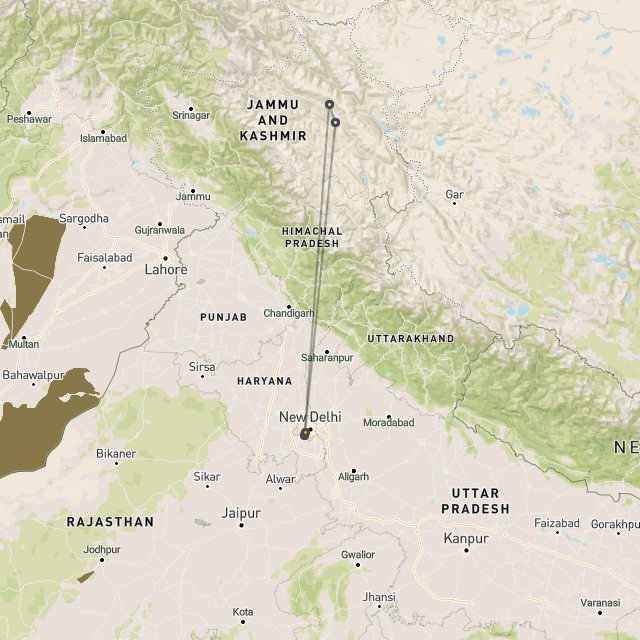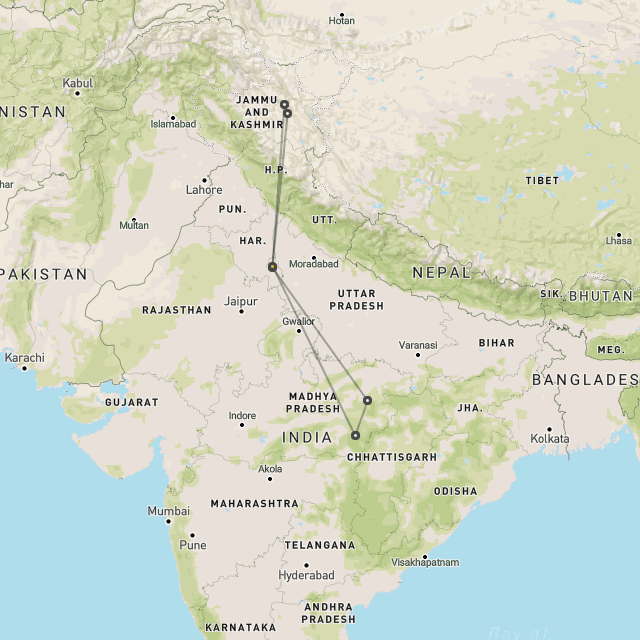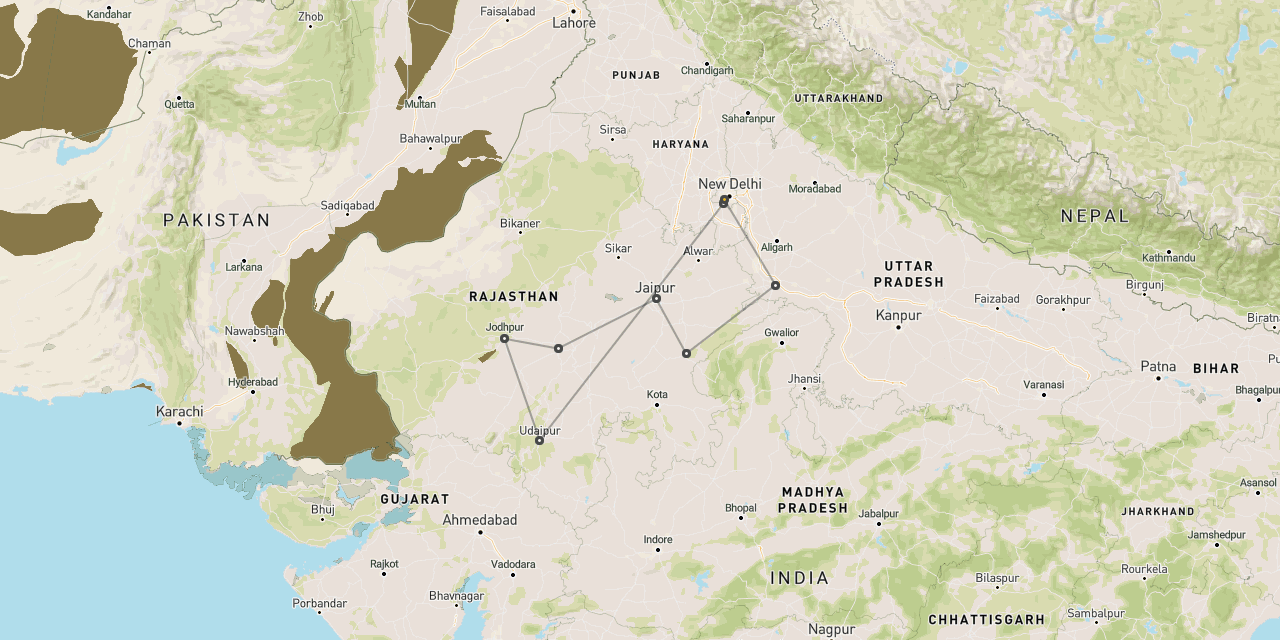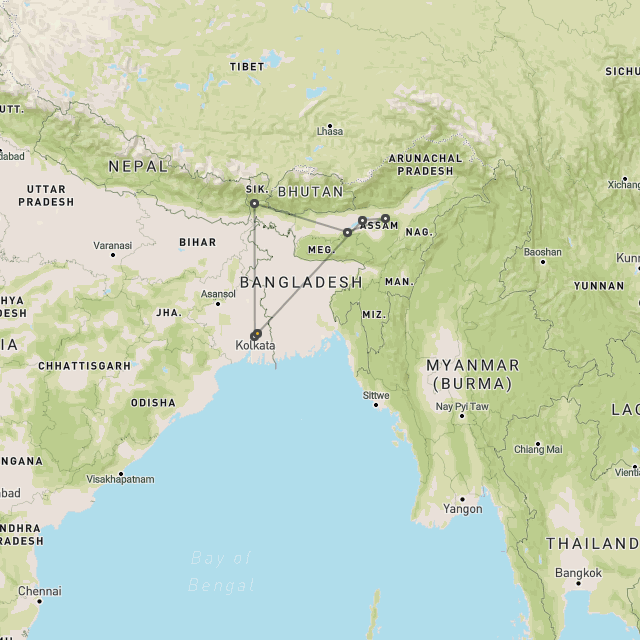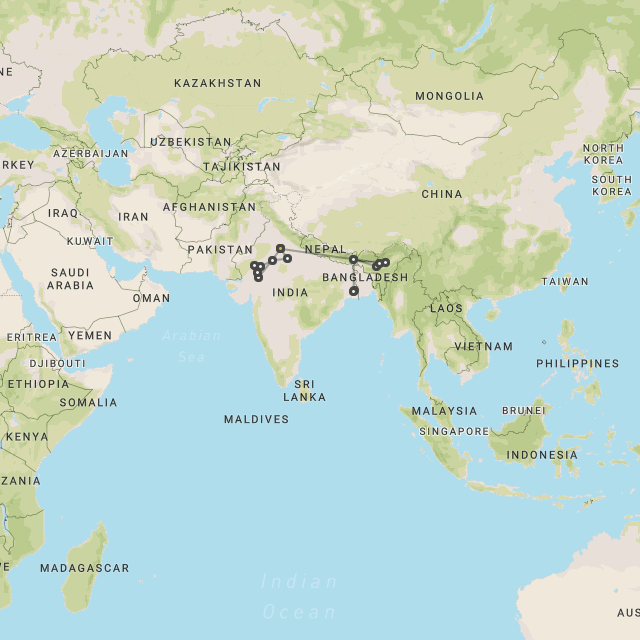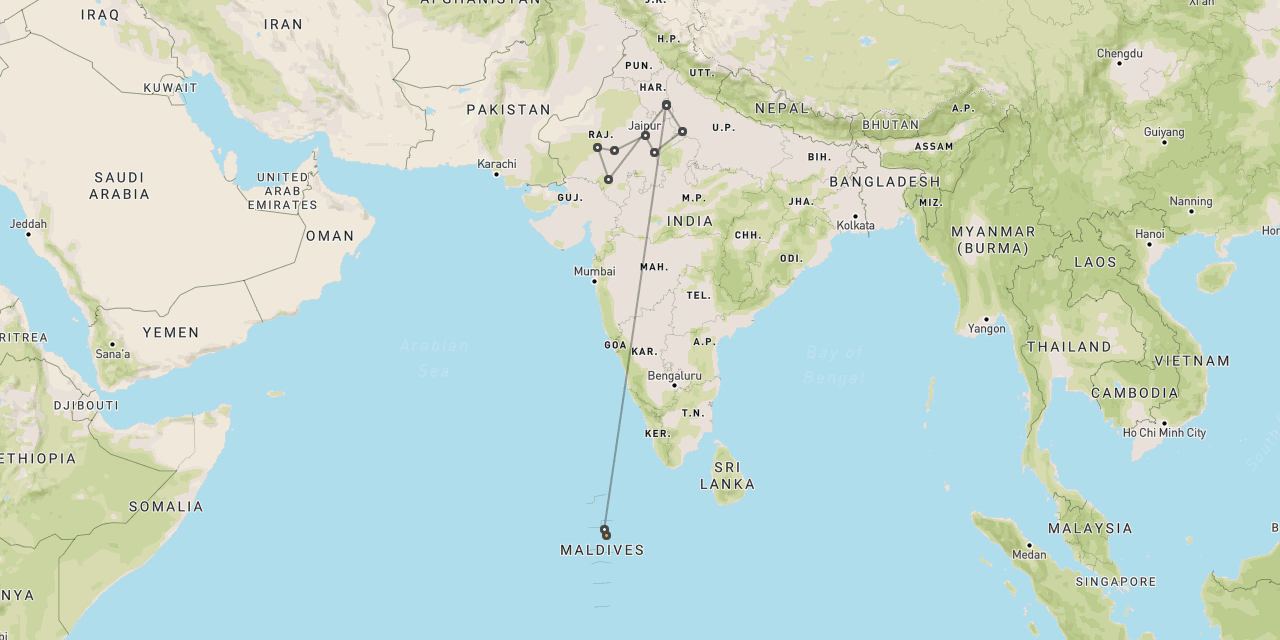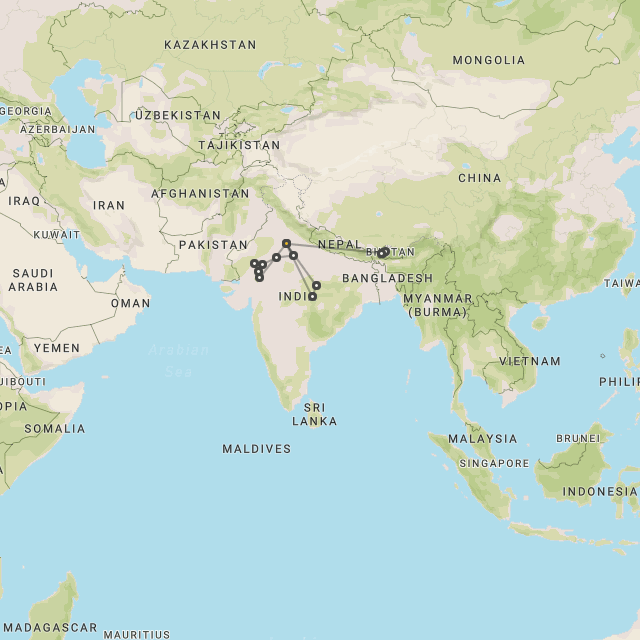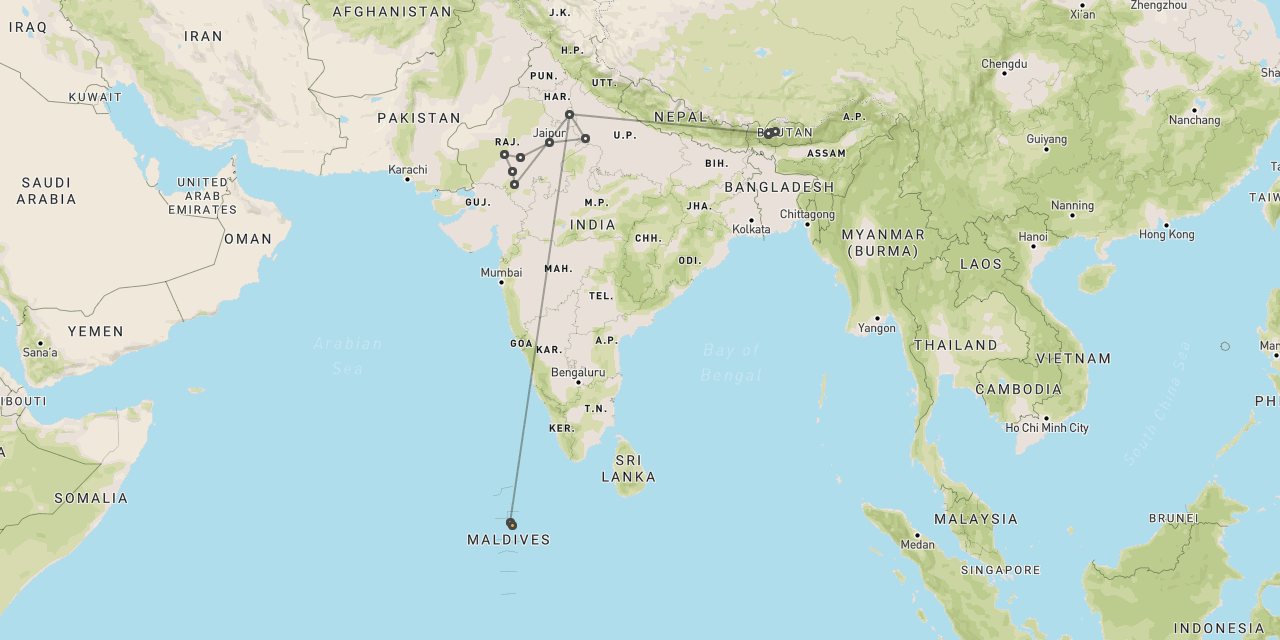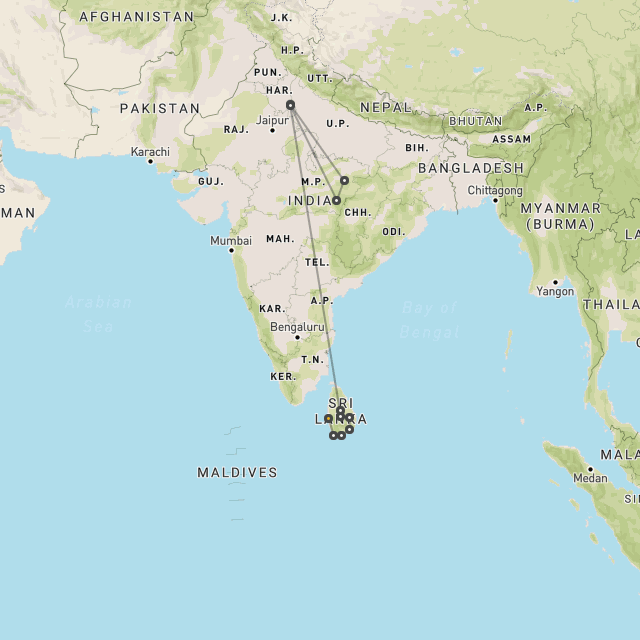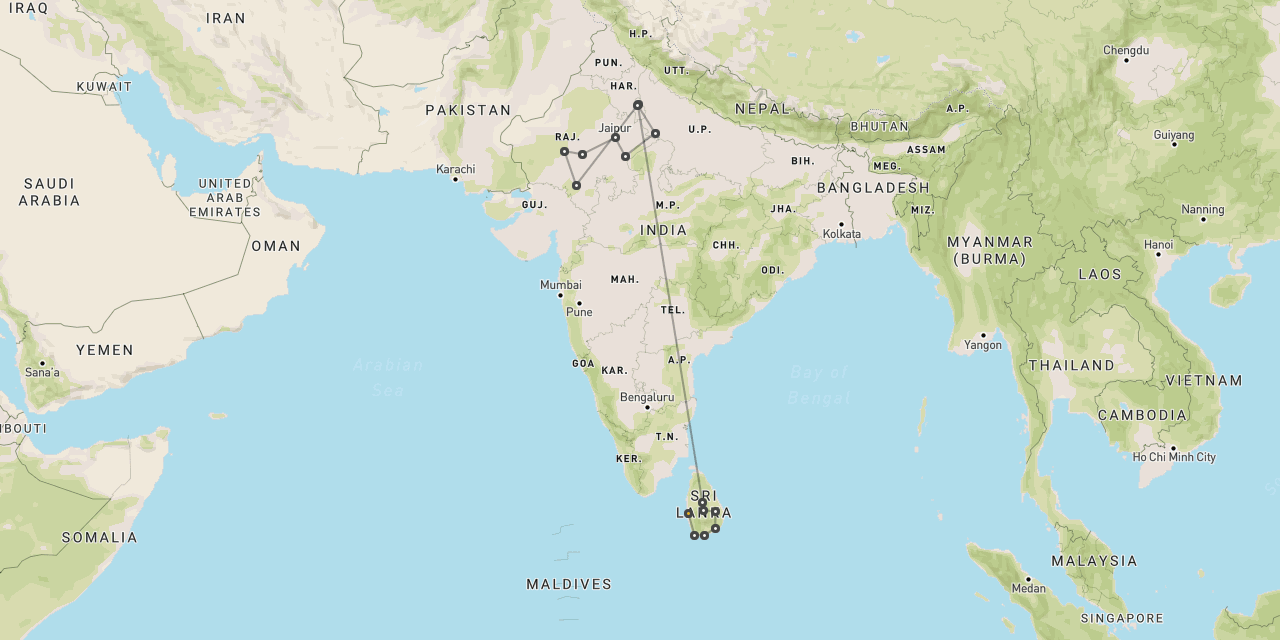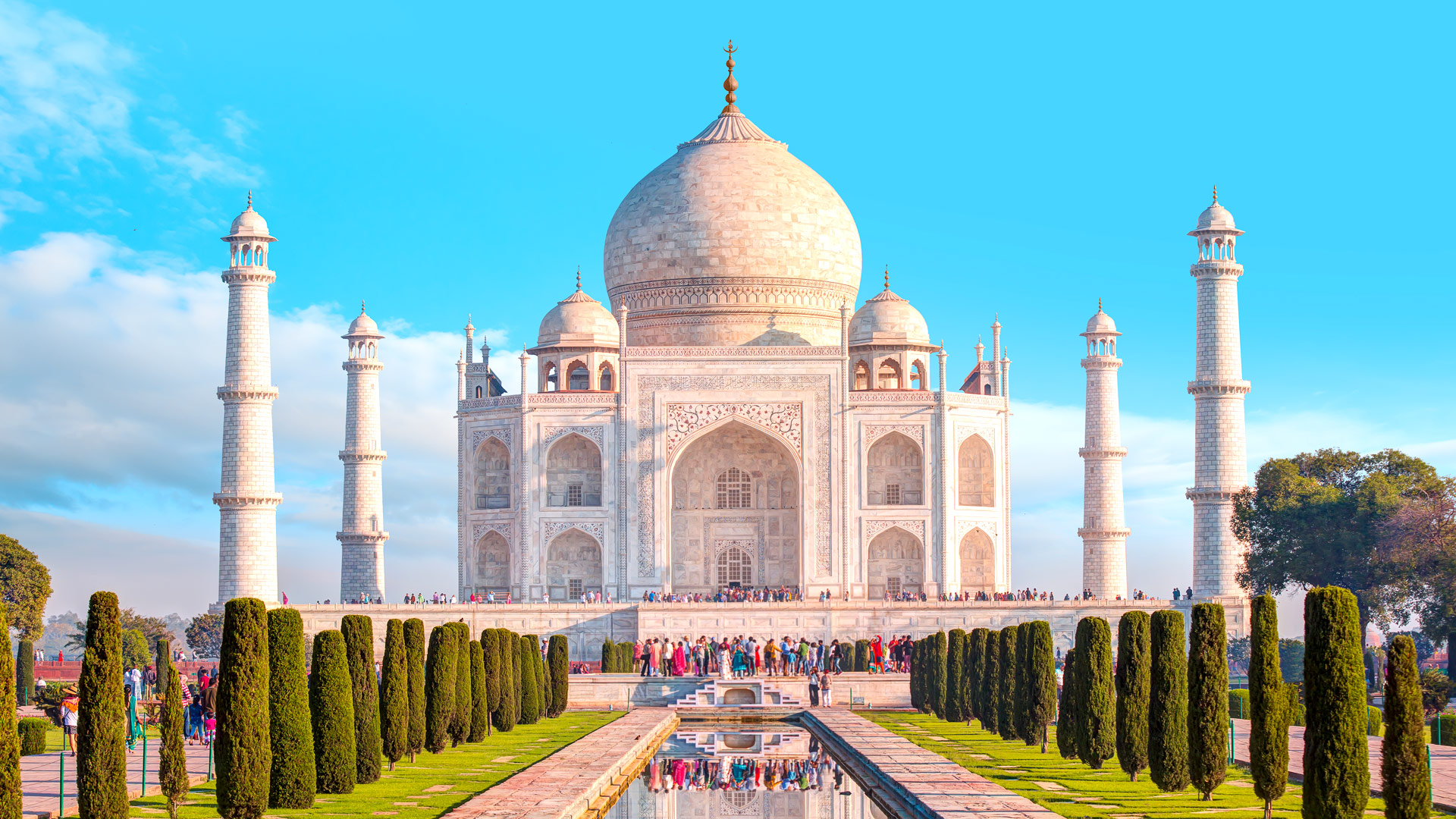
Travel to Agra
Agra
is home to the spectacular
Taj Mahal mausoleum
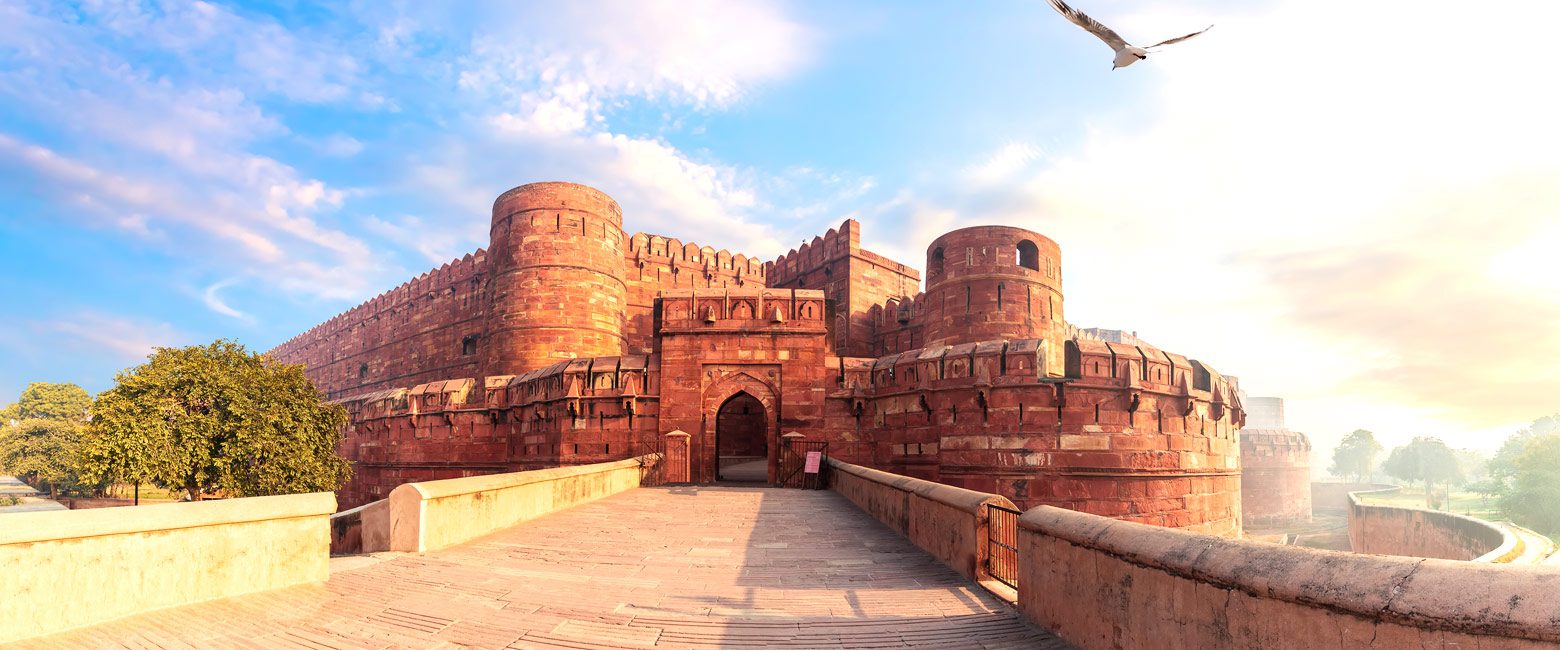
a bland modern city with some outstanding historic monuments
Agra is located in the southwest of Uttar Pradesh in Northern India, roughly 175 km (110 miles) south of Delhi.
Set on the west bank of the languid Yamuna River, the modern modern city of Agra is home to over 1.5 million people and is a famously ramshackle place, of little general interest to most travellers.
However Agra contains a number of stunning historic buildings, including the famous Taj Mahal and the Agra Fort, which date back to the Mughal period around 1550-1750.
The presence of these buildings has led to Agra becoming an incredibly popular spot for international visitors and an essential component of the famous Golden Triangle (along with Delhi and Jaipur).
Since the Taj Mahal is usually best seen early morning and late afternoon, when the light is at its most magical, most visitors tend to spend at least one night in the immediate vicinity.
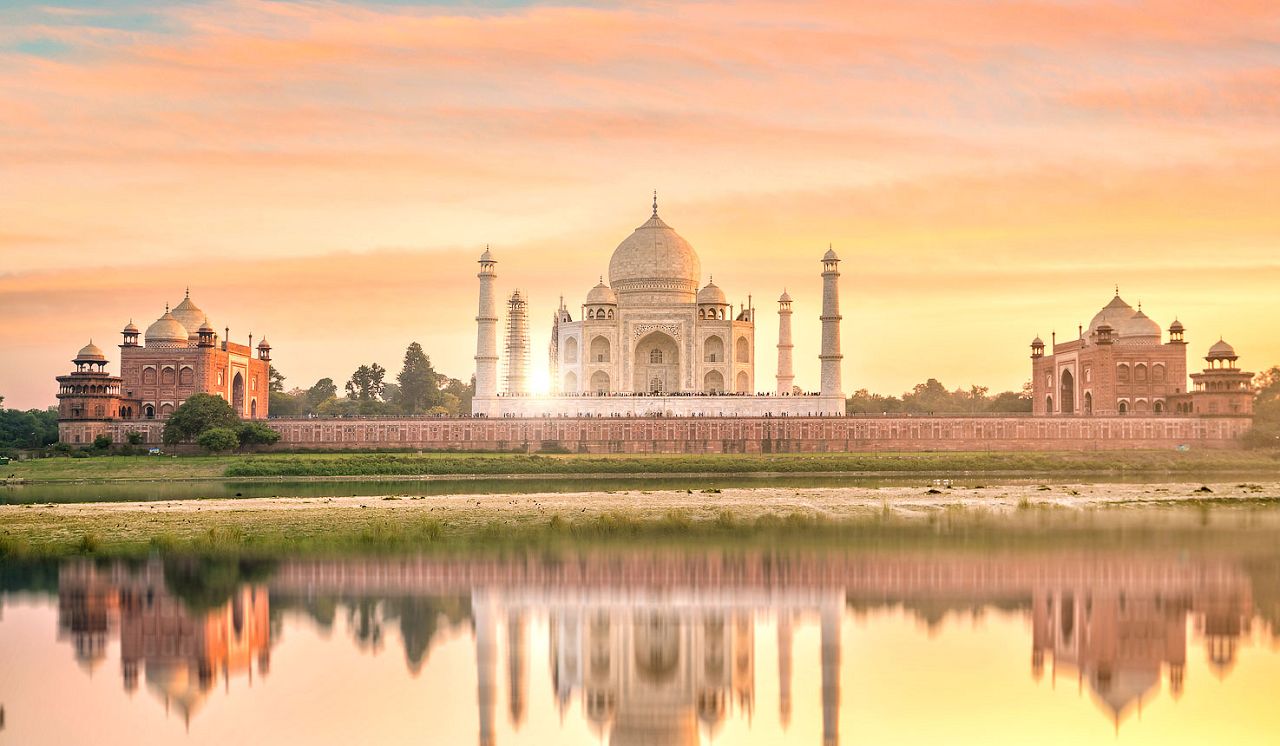
Gallery
Map
The best time of year to visit the Agra area is generally considered to be during Oct-May, although there are considerable climatic variations over that period.
October is the transition period between the end of the monsoon rains and the start of the cool dry season. During October the daytime temperatures usually rise to around 34C/93F, whilst the nighttime low temperatures hold up around 10C/50F. However the rainfall is much lower, dropping to around 25mm (1”) per month. Sunshine is around 9 hours per day (around 80% of daylight hours), meaning that skies are usually clear.
Nov-Feb is the main cool dry season. During Nov-Feb the daytime temperatures usually rise to around 25C/77F, whilst the nighttime low temperatures plunge to around 6C/43F. There should be very little rainfall. Sunshine is around 7 hours per day (around 75% of daylight hours), meaning that skies are usually clear.
Mar-May is the hot season, the often uncomfortable build-up to the main monsoon. During Mar-May the daytime temperatures can climb steeply to around 40C/104F, whilst the nighttime low temperatures are up around 20C/68F. Rainfall usually increases slightly, from almost nothing in March to around 25mm (1”) in May. Sunshine is around 8 hours per day (around 75% of daylight hours), indicating that showers tend to be occasional, set against a usually clear sky.
June is the transition month ahead of the main monsoon rains, often with rather uncomfortable conditions. During June the daytime temperatures can climb very steeply to around 42C/108F, whilst the nighttime low temperatures remain up at a stifling 26C/79F. Rainfall climbs to around 75mm (3”) over the course of the month. Sunshine is around 7 hours per day (around 45% of daylight hours), meaning that skies are often overcast as the monsoon clouds gather.
Jul-Sep is the main monsoon season and is generally considered to be the least favourable time to visit. During Jul-Sep the daytime temperatures drop off slightly to around 35C/95F, whilst the nighttime low temperatures remain up at a stifling 23C/79F. Rainfall climbs to around 200mm (8”) per month. Sunshine drops to around 5 hours per day (around 35% of daylight hours), meaning that skies are very often heavily overcast.
Getting there
The Agra area can easily be reached by road from Delhi, usually on the way out or back from an exploration of Rajasthan.
- Delhi : 175 km to the north
- Jaipur : 225 km to the west
- Ranthambore : 300 km to the southwest
- Panna/Khajuraho : 350 km to the southeast
Where to stay
As you might expect, Agra has a considerable collection of large hotels. All the usual names are here (Hilton, Radisson Marriott, Taj). The issue is not finding reliable accommodation, it’s finding somewhere which is well-located relative to the main points of interest and which has a decent amount of local character. To be honest, it’s not all that easy, we are very much in the main tourist flow here.
horribly busy, but hard to resist
let us know your thoughts about India
and we will help you create the perfect trip

Extraordinary tailor-made adventures,
from earthy and edgy to easy and extravagant
From around USD 2500 per person, you set the ceiling
Sample Trips
Here are some of our popular trip shapes

Get started on your trip
It’s never too soon to get in touch, we are here to help with every stage of your planning.
Best Lodges
We regularly inspect and photograph all of the the best lodges, to ensure that we always recommend the most suitable options
Key Locations
Take a look around related locations. Click ‘View more’ to explore locations further afield.
















